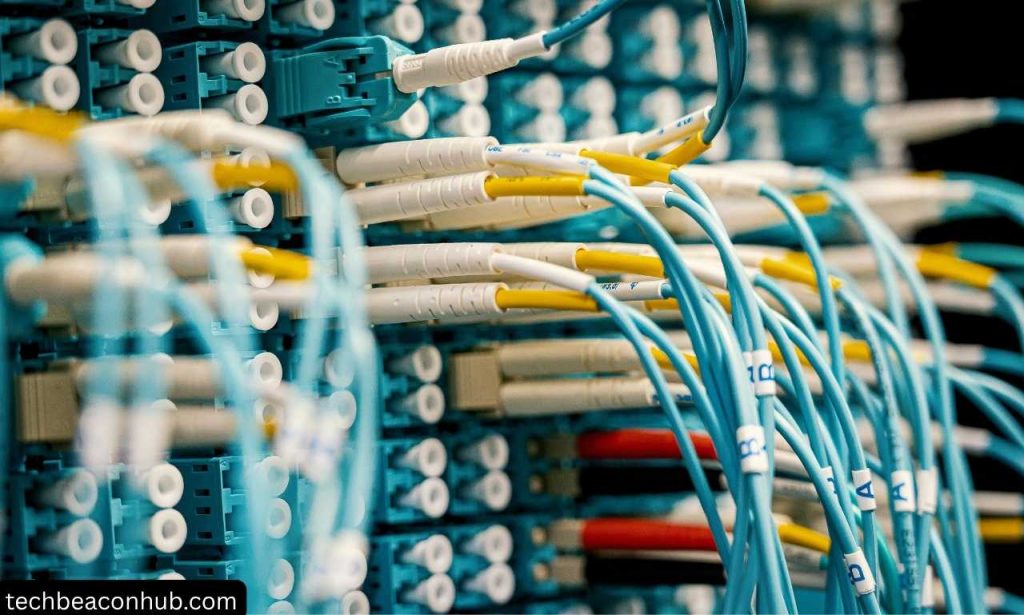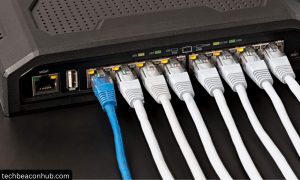Remember the days when we waited minutes for a webpage to load? Those frustrating times are becoming distant memories thanks to advanced networking technologies. Fiber optics has changed how we connect to the internet. The technology behind these lightning-fast connections is called a Passive Optical Network. My neighbor recently switched to fiber internet and couldn’t stop talking about his “PON connection.” He was thrilled about streaming 4K videos without buffering. But what exactly makes this technology so special? Let’s break down PON and why it matters to internet users like us.
What is a passive optical network (PON)?

A Passive Optical Network is a fiber-optic telecommunications system that delivers internet to multiple locations. It uses unpowered optical splitters to serve numerous customers from a single optical fiber. The “passive” part is the lack of powered components between the central office and customer premises.
Unlike traditional networks that rely on active equipment at every junction, PON needs minimal powered devices. This setup creates a point-to-multipoint network where one fiber serves many end users. Think of it as a tree with branches spreading from a single trunk to reach many homes.
PON technology has revolutionized how internet providers deliver high-speed connectivity to homes and businesses. The network can simultaneously transmit data, voice, and video services on the same fiber. Most importantly, it offers significantly faster speeds than older copper-based systems we’ve used for decades.
What are the benefits of PON?
The advantages of Passive Optical Networks make them increasingly popular among service providers and customers. Cost savings rank among the top benefits for network operators. Since PON requires fewer powered components, installation and maintenance expenses decrease dramatically.
Energy efficiency represents another significant advantage of PON systems over traditional networks. The passive nature means less electricity consumption across the network infrastructure. Many providers report energy savings of up to 80% compared to copper-based systems.
Bandwidth capacity truly sets PON apart from older technologies. Modern PON implementations deliver gigabit speeds to end users with room to grow. The fiber infrastructure can handle increasing data demands without requiring complete overhauls.
Reliability improves with fewer points of failure in the network. Active networks depend on powered equipment that can malfunction during power outages. PON’s passive components continue working regardless of local power conditions at junction points.
Future-proofing might be the most compelling reason for PON adoption. While copper networks reach their physical limitations, fiber networks can increase capacity through equipment upgrades. The same fiber cables installed today can support multiple generations of technology improvements.
How does a passive optical network work?
Passive Optical Networks operate on a surprisingly straightforward principle despite their advanced capabilities. Everything starts at the central office where the provider houses the Optical Line Terminal (OLT). This equipment serves as the starting point for all network traffic.
From the OLT, a single fiber carries data toward multiple customer locations. Along this path, unpowered optical splitters divide the signal without requiring electricity. These splitters can distribute one signal to 32, 64, or even 128 separate fibers.
At each customer location, an Optical Network Terminal (ONT) or Optical Network Unit (ONU) receives the signal. This device converts light signals back into electrical signals that your devices understand. Your router then connects to this ONT to provide internet throughout your home.
Downstream traffic (data sent to customers) operates differently than upstream traffic (data sent by customers). For downstream, the OLT broadcasts to all ONTs, but each ONT only processes data intended for it. This approach works similarly to how cable television delivers channels.
Upstream transmission uses a technique called Time Division Multiple Access (TDMA). Each ONT sends data in specific time slots to prevent interference with other users. The network carefully coordinates these transmissions so everyone gets their turn to send data.
Wavelength Division Multiplexing (WDM) allows PON to carry multiple services on different light wavelengths. Voice, data, and video can travel simultaneously on the same fiber. This capability enables providers to offer bundled services over a single connection.
What are the different types of passive optical networks?
The evolution of PON technology has produced several standards with different capabilities. Each type offers unique features suited to different deployment scenarios. Let’s take a closer look at the major types.
GPON
Gigabit Passive Optical Network (GPON) currently dominates the PON market worldwide. This standard offers downstream speeds up to 2.5 Gbps and upstream speeds of 1.25 Gbps. These speeds are shared among users on the same split.
GPON was developed to deliver voice, data, and video services efficiently over a single fiber. The standard uses different wavelengths for downstream and upstream traffic. Downstream operates at 1490 nm while upstream uses 1310 nm wavelength.
One key advantage of GPON lies in its efficiency protocol. Unlike some other standards, GPON encapsulates data very efficiently. This efficiency means more actual bandwidth for users rather than overhead.
Many major telecommunications companies have chosen GPON for their fiber rollouts. The technology offers a good balance between cost and performance. It supports split ratios up to 1:64 or even 1:128 in some implementations.
Security remains a priority in GPON implementations through the Advanced Encryption Standard (AES). This encryption protects data traveling downstream to customers. Without proper encryption, other users on the same split could access your data.
EPON
Ethernet Passive Optical Network (EPON) offers an alternative approach based on familiar Ethernet standards. This type uses standard Ethernet frames for data transmission. Network engineers already familiar with Ethernet find this approach intuitive.
EPON typically delivers symmetrical 1 Gbps speeds both downstream and upstream. Newer versions can reach 10 Gbps in both directions. The symmetrical nature makes EPON popular for business applications that require equal upload capacity.
Since EPON uses standard Ethernet protocols, it integrates easily with existing networks. This compatibility reduces training requirements and simplifies network management, and many enterprises prefer EPON for this reason.
The standard originated from IEEE 802.3ah specifications rather than the ITU standards governing GPON. This different development path created some market fragmentation. Asia-Pacific regions have particularly embraced EPON deployments.
Cost considerations sometimes favor EPON in specific markets. The components for EPON can be less expensive than GPON equivalents. However, this cost advantage must be weighed against bandwidth efficiency differences.
Conclusion
Passive Optical Networks (PONs) have fundamentally changed how we connect to the Internet. Their speed, efficiency, and scalability combination make them ideal for modern connectivity needs. As bandwidth demands continue growing, PON technology provides a sustainable path forward.
Whether through GPON or EPON implementations, these networks deliver the performance we increasingly expect. The passive infrastructure reduces costs while improving reliability. Service providers benefit from lower operational expenses while customers enjoy faster connections.
Looking ahead, PON technology will continue evolving to meet future demands. Next-generation standards already promise 25, 50, or even 100 Gbps speeds. Equipment upgrades can support these advancements through the basic fiber infrastructure installed today.
Fiber connections built on PON technology represent the gold standard for anyone considering internet options. The investment in fiber infrastructure pays dividends through superior performance and future readiness. As our digital lives grow more connected, the importance of robust network infrastructure only increases.
Also Read: Why Is Data Important for Business?
FAQs
Current PON technologies deliver speeds from 1 Gbps to 10 Gbps to end users, depending on the standard and implementation.
Passive networks use unpowered splitters while active networks require powered equipment at distribution points.
Yes, PON can simultaneously carry internet, phone, and television services on different wavelengths.
Most PON implementations can reach distances of 20 kilometers from the central office to end users.



